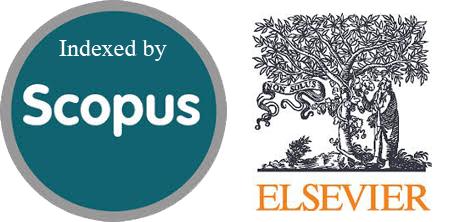Assessment of Anti-Zinc Transporter Protein-8 Function in Adults with Type 1 Diabetes
DOI:
https://doi.org/10.54133/ajms.v8i2.1786الكلمات المفتاحية:
Autoantibody، Type 1 diabetes mellitus، Zinc transporter 8 antibodyالملخص
الملخص: يهاجم الجهاز المناعي بشكل خاص (الخلايا التائية ذاتية التفاعل والأجسام المضادة الذاتية) خلايا بيتا البنكرياسية، مما يؤدي إلى مرض المناعة الذاتية الخاص بالأعضاء والمعروف باسم داء السكري من النوع الأول (T1DM). من بين المؤشرات المصلية المستخدمة لمرض السكري من النوع الأول (T1DM)، الأجسام المضادة لحمض الجلوتاميك (GADA65)، والأجسام المضادة (IA-2)، والأجسام المضادة الذاتية للأنسولينوما (IA-2A)، والأجسام المضادة لناقل الزنك (Zn-T8) لها أهمية كبيرة. قد يؤدي اضافة الأجسام المضادة الذاتية لناقل الزنك 8 (ZnT8A) في بروتوكول التشخيص التقليدي لمرض السكري من النوع الأول إلى تعزيز الحساسية العامة لاكتشاف الأجسام المضادة الذاتية، وقد يتنبأ بالمضاعفات المبكرة.
الأهداف: تهدف هذه الدراسة إلى تحليل وجود الأجسام المضادة الذاتية المرتبطة بمرض السكري من النوع الأول GADA65، IA-2A، و ZnT8 وتحديد أي ارتباط مع العمر والجنس ومدة المرض في المرضى البالغين
الطريقة: تم إجراء هذا البحث في أربعة مستشفيات تعليمية في مدينة البصرة خلال فترة خمسة أشهر من مايو إلى ديسمبر 2024، على 100 مريض بالغ تم تأكيد إصابتهم بمرض السكري من النوع الأول، وعلى 50 من الأصحاء (أقارب من الدرجة الأولى). تم تقييم تركيزات مصل ZnT8A و GAD65A و IA-2A بشكل فردي باستخدام مجموعة ELISA، في كل من مجموعات الحالات والمجموعات الضابطة. تم جمع بيانات مثل تركيز الهيموجلوبين السكري واليوريا والكرياتينين والكوليسترول الكلي وكيتونات البول من سجلات المرضى الخارجيين.
النتائج: يوجد فرق كبير إحصائيًا في تركيزات الأجسام المضادة الذاتية ZnT8A و GAD65A و IA-2A بين مجموعات الحالات والمجموعات الضابطة، بقيم P 0.002 و 0.0001 و 0.0001 على التوالي. كانت قيم القطع لـ IA-2A ≥ 7.5 وحدة/مل، وGADA ≥ 5 وحدة/مل، ومضاد ZnT8 > 15 وحدة/مل. لم يتم العثور على أي ارتباطات بين وجود ZnT8A والجنس أو المدة أو GADA. ارتبطت إيجابية ZnT8A ببداية مبكرة للمرض (نسبة الأرجحية 2.50، فاصل الثقة 95% 1.02 - 7.00، P = 0.039) ووجود IA-2A (نسبة الأرجحية 2.65، فاصل الثقة 95% 1.00 - 6.98، P = 0.015).
ا
التنزيلات
المراجع
Speight J, Pouwer F. Diabetes Mellitus Type 1. In Cambridge Handbook of Psychology, Health and Medicine, (3rd ed.), Cambridge University Press: Cambridge, UK, 2022; pp. 477–480. doi: 10.3390/jpm1303042.
Almahfoodh D, Alabbood M, Alali A, Mansour A. Epidemiology of type 1 diabetes mellitus in Basrah, Southern Iraq: A retrospective study. Diabetes Res Clin Pract. 2017;133:104-108. doi: 10.1016/j.diabres.2017.09.001. DOI: https://doi.org/10.1016/j.diabres.2017.09.001
Mobasseri M, Shirmohammadi, M, Amiri T, Vahed N, Fard H, Ghojazadeh M. Prevalence and incidence of type 1 diabetes in the world: a systematic review and meta-analysis. Health Promot. Perspect. 2020:10:98–115. doi: 10.34172/hpp.2020.18, DOI: https://doi.org/10.34172/hpp.2020.18
Diaz-Valencia P, Bougnères P, Valleron A. Global epidemiology of type 1 diabetes in young adults and adults: a systematic review. BMC Public Health. 2015:17:215-255. doi:10.1186/s12889-015-1591-y. DOI: https://doi.org/10.1186/s12889-015-1591-y
Kawasaki E, Matsuura N, Eguchi K. Type 1 diabetes in Japan. Diabetologia 2006; 49:828–836. doi: 10.1007/s00125-006-0213-8. DOI: https://doi.org/10.1007/s00125-006-0213-8
Ghalwash M, Dunne JL, Lundgren M, Rewers M, Ziegler AG, Anand V, et al. Two-age islet-autoantibody screening for childhood type 1 diabetes: a prospective cohort study. Lancet Diabetes Endocrinol. 2022;10(8):589-596. doi: 10.1016/S2213-8587(22)00141-3. DOI: https://doi.org/10.1016/S2213-8587(22)00141-3
Kawasaki E. Anti-islet autoantibodies in type 1 diabetes. Int J Mol Sci. 2023;24:10012. doi: 10.3390/ijms241210012. DOI: https://doi.org/10.3390/ijms241210012
Lan M, Lu J, Goto Y, Notkins A. Molecular cloning and identification of a receptor-type protein tyrosine phosphatase, IA-2, from human insulinoma. DNA Cell. Biol. 1994;13:505–514. doi: 10.1089/dna.1994.13.505. DOI: https://doi.org/10.1089/dna.1994.13.505
Wenzlau JM, Juhl K, Yu L, Moua O, Sarkar SA, Gottlieb P, et al. The cation efflux transporter ZnT8 (Slc30A8) is a major autoantigen in human type 1 diabetes. Proc Natl Acad Sci U S A. 2007;104(43):17040-17045. doi: 10.1073/pnas.0705894104. DOI: https://doi.org/10.1073/pnas.0705894104
Yi B, Huang G, Zhou Z. Current and future clinical applications of zinc transporter-8 in type 1 diabetes mellitus. Chin Med J (Engl). 2015;128(17):2387-94. doi: 10.4103/0366-6999.163389. DOI: https://doi.org/10.4103/0366-6999.163389
Huang Q, Du J, Merriman C, Gong Z. Genetic, functional, and immunological study of ZnT8 in diabetes. Int J Endocrinol. 2019;2019:1524905. doi: 10.1155/2019/1524905. DOI: https://doi.org/10.1155/2019/1524905
Long A, Gooneratne A, Rokni S, Williams A, Bingley P. The role of autoantibodies to zinc transporter 8 in prediction of type 1 diabetes in relatives: lessons from the European nicotinamide diabetes intervention trial (ENDIT) cohort. J Clin Endocrinol Metab. 2012;97(2):632-637. doi: 10.4103/0366-6999.163389. DOI: https://doi.org/10.1210/jc.2011-1952
Gu Y, Merriman C, Guo Z, et al. Novel autoantibodies to the beta-cell surface epitopes of ZnT8 in patients progressing to type-1 diabetes. J Autoimmun. 2021;122:102677. doi:10.1016/j.jaut.2021.102677.
Bhatty A, Baig S, Fawwad A, Rubab Z, Shahid M, Waris N. Association of zinc transporter-8 autoantibody (ZnT8A) with type 1 diabetes mellitus. Cureus. 2020;12(3):e7263. doi: 10.7759/cureus.7263. DOI: https://doi.org/10.7759/cureus.7263
Hazime R, Lamjadli S, Guennouni M, Belkrachni M, Eddehbi F, Oujamaa I, et al. Autoantibodies in type 1 diabetes: Prevalence and clinical profiles. Diabetes Epidemiol Manag. 2025;17:100246. doi: 10.1016/j.deman.2024.100246. DOI: https://doi.org/10.1016/j.deman.2024.100246
Mayer-Davis EJ. ISPAD clinical practice consensus guidelines 2018: definition, epidemiology, and classification of diabetes in children and adolescents. Pediatr Diabetes. 2018;19:7–19. doi: 10.1111/pedi.12773. DOI: https://doi.org/10.1111/pedi.12773
Imagawa A, Hanafusa T, Awata T, Ikegami H, Uchigata Y, Osawa Het al. Report of the committee of the Japan Diabetes Society on the research of fulminant and acute-onset type 1 diabetes mellitus: New diagnostic criteria of fulminant type 1 diabetes mellitus (2012). J Diabetes Investig. 2012;3(6):536-539. doi: 10.1111/jdi.12024. DOI: https://doi.org/10.1111/jdi.12024
Tanaka S, Ohmori M, Awata T, Shimada A, Murao S, Maruyama T, et al. Diagnostic criteria for slowly progressive insulin-dependent (type 1) diabetesmellitus (SPIDDM) (2012): report by the committee on slowlyprogressive insulin-dependent (type 1) diabetes mellitus ofthe Japan diabetes society. Diabetol Int. 2015; 6:1–7. DOI: https://doi.org/10.1007/s13340-014-0199-2
ElSayed NA, Aleppo G, Aroda VR, Bannuru RR, Brown FM, Bruemmer D, et al. Classification and Diagnosis of Diabetes: Standards of Care in Diabetes—2023. Diabetes Care. 2023;46(Supplement_1):S19–S40. doi: 10.2337/dc23-S002. DOI: https://doi.org/10.2337/dc23-S002
Elmaoğulları S, Uçaktürk S, Elbeg Ş, Döğer E, Tayfun M, Gürbüz F, et al. Prevalence of ZnT8 antibody in Turkish children and adolescents with new onset type 1 diabetes. J Clin Res Pediatr Endocrinol. 2018;10(2):108-112. doi: 10.4274/jcrpe.5020. DOI: https://doi.org/10.4274/jcrpe.5020
Abd Elhameed ZA, Ezz Eldene AM, Abd El Hafeez HA, Mohammed HA, Abd El Salam AM, Mokhtar AA. Prevalence of zinc transporter 8 auto antibodies among newly diagnosed type 1 diabetic cases admitted to Assiut university children hospital. Egypt J Immunol. 2020;27(1):29-36. PMID: 33180385.
Rochmah N, Faizi M, Windarti S. Zinc transporter 8 autoantibody in the diagnosis of type 1 diabetes in children. Clin Exp Pediatr. 2020;63(10):402-405. doi: 10.3345/cep.2019.01221. DOI: https://doi.org/10.3345/cep.2019.01221
Kawasaki E, Oikawa Y, Okada A, Kanatsuna N, Kawamura T, Kikuchi T, et al. Zinc transporter 8 autoantibodies complement glutamic acid decarboxylase and insulinoma-associated antigen-2 autoantibodies in the identification and characterization of Japanese type 1 diabetes. J Diabetes Investig. 2020;11(5):1181-1187. doi: 10.1111/jdi.13251. DOI: https://doi.org/10.1111/jdi.13251
de Oliveira Andrade LJ, Matos de Oliveira GC, Rocha RM, Bittencourt AMV, David TM, de Oliveira LM, et al. Evaluating the diagnostic accuracy of anti- zinc transporter 8 antibodies in type 1 diabetes: a systematic review and meta-Analysis. medRxiv. 2024.06.07.24308627. doi: 10.1101/2024.06.07.24308627. DOI: https://doi.org/10.1101/2024.06.07.24308627
Kawasaki E. ZnT8 and type 1 diabetes. Endocr J. 2012;59(7):531-537. doi: 10.1507/endocrj.ej12-0069. DOI: https://doi.org/10.1507/endocrj.EJ12-0069
Marchand L, Garnier L, Thivolet C, Nicolino M, Fabien N. Very high titres of ZnT8 autoantibodies at type 1 diabetes onset and presence of autoantibodies related to other autoimmune disorders. Diabetes Metab. 2020;46(1):73-74. doi: 10.1016/j.diabet.2018.03.003. DOI: https://doi.org/10.1016/j.diabet.2018.03.003
Wenzlau JM, Liu Y, Yu L, Moua O, Fowler KT, Rangasamy S, et al. A common nonsynonymous single nucleotide polymorphism in the SLC30A8 gene determines ZnT8 autoantibody specificity in type 1 diabetes. Diabetes. 2008;57(10):2693-2697. doi: 10.2337/db08-0522. DOI: https://doi.org/10.2337/db08-0522
Gu Y, Merriman C, Guo Z, Jia X, Wenzlau J, Li H, Li H, et al. Novel autoantibodies to the β-cell surface epitopes of ZnT8 in patients progressing to type-1 diabetes. J Autoimmun. 2021;122:102677. doi: 10.1016/j.jaut.2021.102677. DOI: https://doi.org/10.1016/j.jaut.2021.102677
Gomes KF, Semzezem C, Batista R, Fukui RT, Santos AS, Correia MR, et al. Importance of zinc transporter 8 autoantibody in the diagnosis of type 1 diabetes in Latin Americans. Sci Rep. 2017;7(1):207. doi: 10.1038/s41598-017-00307-4. DOI: https://doi.org/10.1038/s41598-017-00307-4
Niechciał E, Rogowicz-Frontczak A, Piłaciński S, Fichna M, Skowrońska B, Fichna P, et al. Autoantibodies against zinc transporter 8 are related to age and metabolic state in patients with newly diagnosed autoimmune diabetes. Acta Diabetol. 2018;55(3):287-294. doi: 10.1007/s00592-017-1091-x. DOI: https://doi.org/10.1007/s00592-017-1091-x

التنزيلات
منشور
كيفية الاقتباس
إصدار
القسم
الرخصة
الحقوق الفكرية (c) 2025 Al-Rafidain Journal of Medical Sciences

هذا العمل مرخص بموجب Creative Commons Attribution-NonCommercial-ShareAlike 4.0 International License.
Published by Al-Rafidain University College. This is an open access journal issued under the CC BY-NC-SA 4.0 license (https://creativecommons.org/licenses/by-nc-sa/4.0/).










